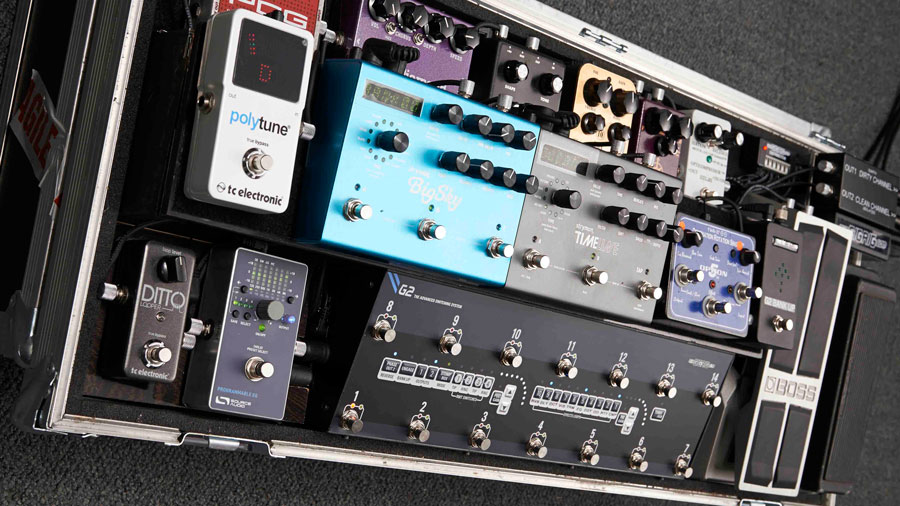In our studies learning how to use plugins: What is a processor? What is an effect? What is an insert? What is a send? These are all things TRCoA students will learn in BRT and Pro Tools classes. Plus, you'll learn the order in which plugins are implemented has a huge effect.
If you're a guitarist, or someone that uses floor based effect pedals, you've probably put much thought and study into the order of the pedals on your board. Use this knowledge to help you learn how to use a plugin chain. When we wire up a board, we usually don’t have the convenience of reordering our signal chain at will, unless we're using a switching unit:
G2 Switching System
Usually for conventional sounds, the effects that are pre amplifier are compressors, gain devices, pitch shifting devices, volume and wah pedals, and the like. These are devices that are normally used as inserts in a DAW.
Devices that are usually post gain (used in an effects loop if your amp has one) are modulation devices (chorus, flange, phase, tremolo, vibrato, rotary) and ambient devices like echo, delay, and reverb. These are usually used in a send.
Of course there are no rules. Just common practice. If you're looking for wild, unconventional sound, experiment with the order of your effects. Normally I wouldn’t run my delay into my overdrive on my pedal board, but if I want an unusual sound I might try it.
My board is wired: compressor, pitch shifter, tuner, volume/wah, clean boost, fuzz, overdrive 1, overdrive 2 (all in front of my amp), then univibe, chorus, delay, tremolo, and reverb (all in my effects loop after the preamp of the amplifier).










There are 0 comments